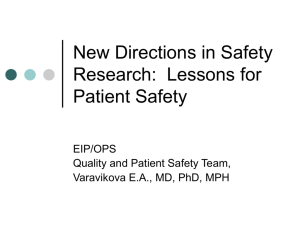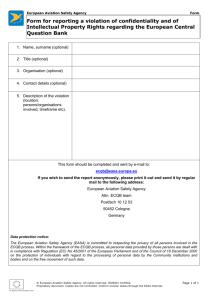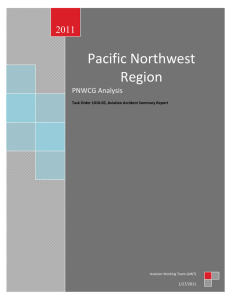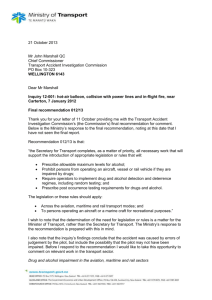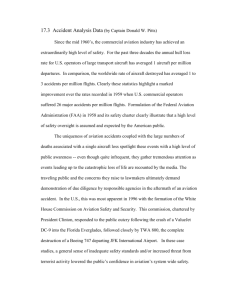ACCIDENT AND HAZARD REPORTS
advertisement
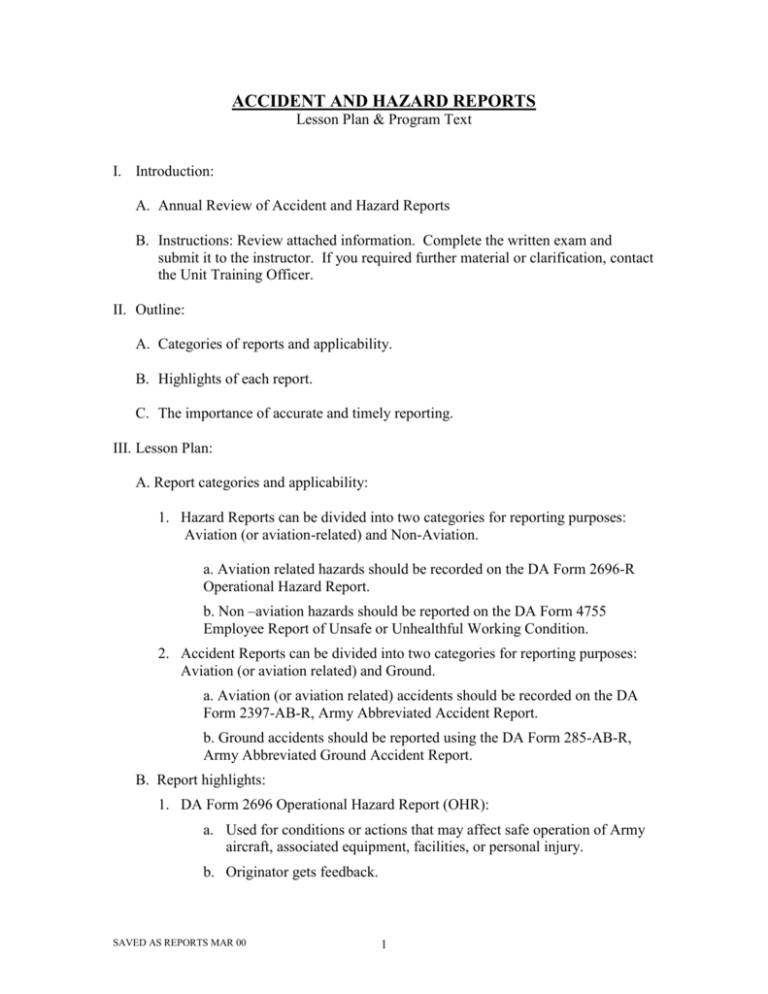
ACCIDENT AND HAZARD REPORTS Lesson Plan & Program Text I. Introduction: A. Annual Review of Accident and Hazard Reports B. Instructions: Review attached information. Complete the written exam and submit it to the instructor. If you required further material or clarification, contact the Unit Training Officer. II. Outline: A. Categories of reports and applicability. B. Highlights of each report. C. The importance of accurate and timely reporting. III. Lesson Plan: A. Report categories and applicability: 1. Hazard Reports can be divided into two categories for reporting purposes: Aviation (or aviation-related) and Non-Aviation. a. Aviation related hazards should be recorded on the DA Form 2696-R Operational Hazard Report. b. Non –aviation hazards should be reported on the DA Form 4755 Employee Report of Unsafe or Unhealthful Working Condition. 2. Accident Reports can be divided into two categories for reporting purposes: Aviation (or aviation related) and Ground. a. Aviation (or aviation related) accidents should be recorded on the DA Form 2397-AB-R, Army Abbreviated Accident Report. b. Ground accidents should be reported using the DA Form 285-AB-R, Army Abbreviated Ground Accident Report. B. Report highlights: 1. DA Form 2696 Operational Hazard Report (OHR): a. Used for conditions or actions that may affect safe operation of Army aircraft, associated equipment, facilities, or personal injury. b. Originator gets feedback. SAVED AS REPORTS MAR 00 1 c. Commander reviews and signs. 2. DA Form 4755 Report of Unsafe or Unhealthful Working Condition: a. Used to report a hazardous action or condition. b. May be submitted directly to the State Safety Manager. c. Underutilized, many times OHRs are submitted when this form is applicable. 3. DA Form 2397-AB-R Abbreviated Aviation Accident Report (AAAR): a. Required as a recordable incident when the mission is interrupted or not completed. Intent for flight may or may not exist. b. Not required for weather delays unless the mission is canceled. c. Not required for failure of fair wear and tear items found on pre-flight or post-flight. d. Required for all class C, D, & F accidents. e. Initial for information provided by pilot, then forwarded to ASO. 4. DA From 285-AB-R Abbreviated Ground Accident Report (AGAR): a. Required anytime there is injury or damage to an Army Motor Vehicle (AMV). b. Required for C and D class accidents. c. Initial information provided by driver, then forward to Safety Officer. D. Timely Reporting: Accurate timely reporting is not only required by regulation, is essential to a successful safety program. Information must be disseminated through the appropriate channels to ensure action at all levels as appropriate. Reports can lead to Safety of Use messages, Safety of Flight messages, and possibly even aircraft grounding or vehicle deadline procedures. At a minimum information gathered from reports is used for hazard trend tracking. However, the individual is the first step in the reporting process. IV. References: 1. Unit SOP 2. AR 385-40 3. DA PAM 385-40 SAVED AS REPORTS MAR 00 2



